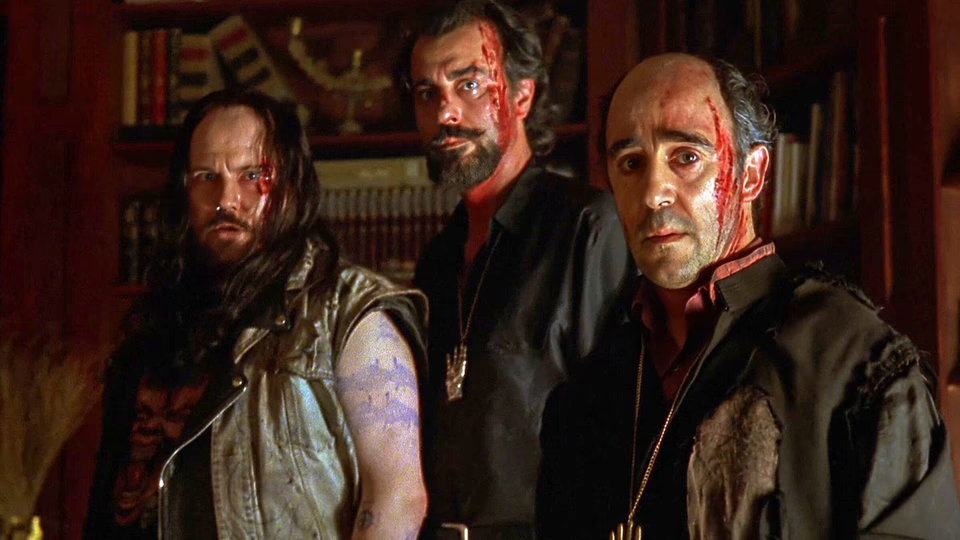The Day of the Beast

During the opening credits of The Day of the Beast, a Catholic priest, having just arrived in Madrid, encounters a mime performing on a street wall. The priest glances up, takes two hesitant steps, and with the casual determination of someone straightening a crooked picture frame, pushes the mime backward down a flight of subway stairs. The moment plays out with such matter-of-fact precision that I found myself laughing despite—or perhaps because of—its cruelty.
This is the kind of film where such a scene makes perfect sense. Our protagonist, you see, is a theologian who has decoded a Biblical message revealing the Antichrist will be born in Madrid on Christmas Day—which happens to be tomorrow. His solution? Commit as many evil acts as possible to gain Satan’s attention and trust, thereby learning the exact location of the unholy birth so he can prevent it. It’s the kind of premise that could only work as either deadly serious horror or pitch-black comedy. Director Álex de la Iglesia wisely opts for the latter.
The film announces its intentions in a pre-credits sequence where our hero confides his discovery to an elder priest. As they rise to leave, scattered papers led to a perfectly timed death-by-crucifix that would feel at home in a Wile E. Coyote cartoon. If you’re not laughing here, this probably isn’t your movie. If you are, buckle up for what follows.
Álex Angulo delivers a masterful performance as the priest. His deadpan earnestness sells even the most outrageous moments, bringing a conviction to the role that grounds the surrounding chaos. When he commits evil acts, his face carries the determined concentration of someone working through a particularly challenging crossword puzzle.
De la Iglesia’s direction proves consistently inventive. In one standout sequence, the camera dollies side-to-side through an apartment during a chase, like a trapped witness unable to intervene. It’s the kind of creative choice that elevates the material above mere farce. The Madrid setting is equally well-utilized, the ancient European architecture lending gravity to the supernatural proceedings while the modern city bustle provides a canvas for the comedy.
Where the film stumbles is in its middle section, when it partially abandons its absurdist tone for more conventional farce territory. A dim-witted metalhead sidekick feels transported from a lesser comedy, and scenes of the priest attempting to hide unconscious bodies tread familiar ground. There’s still wit here—a running gag involving a body’s head hitting each stair step as it’s dragged upward had me wincing and chuckling—but it lacks the inspired lunacy of the opening acts.
The film somewhat recovers in its final third by pivoting toward Omen-style supernatural horror, though these sequences also feel more derivative than the original premise promised. Still, de la Iglesia maintains enough of his unique touch to keep things interesting.
The Day of the Beast is a film that works best when it’s at its most outrageous. It’s as though de la Iglesia and his team had a brilliant concept—a priest trying to out-evil Satan—but lost some nerve in executing it fully. When it commits to its premise, it soars. When it retreats to safer comedy territory, it merely amuses.
What we’re left with is still a remarkably entertaining film that suggests great things from its director. It’s the kind of movie that makes me excited about cinema—not because it’s perfect, but because it shows what’s possible when filmmakers aren’t afraid to take risks. Especially when those risks involve pushing mimes down stairs.